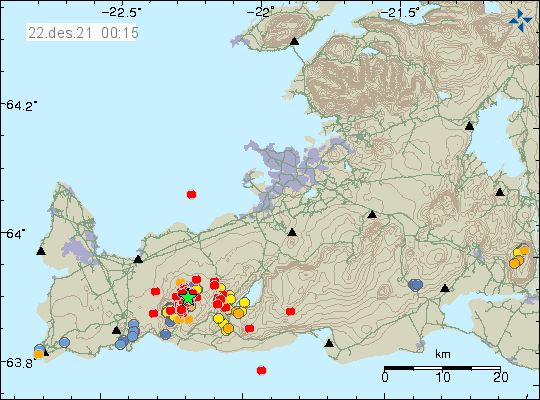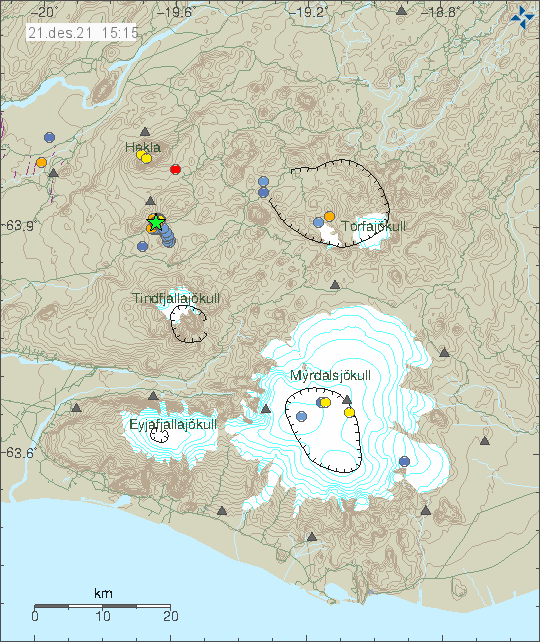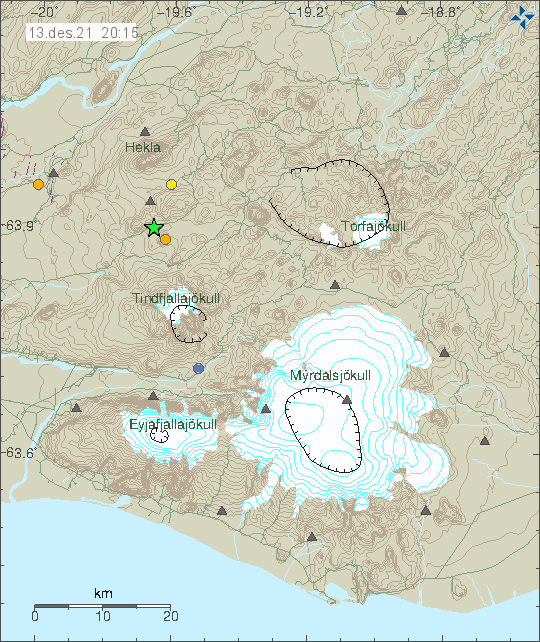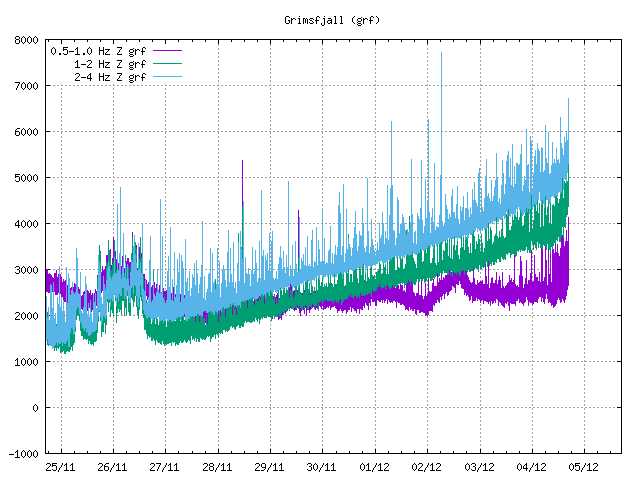Information here are going to get outdated quickly.
The earthquake activity in Fagradalsfjall mountain continued on 22-December and on 23-December-2021. Largest earthquake in last few hours had a magnitude of Mw4,9 and was felt over a wide area. No property damage has yet happened because of this earthquake activity so far.
There are now three centres where the earthquake activity is happening. The first one is north of the large crater, the second one is under the main crater and the third one is in Nátthagakrika (about south-west of the large crater). This is the area where people used to walk up the eruption on walking paths A and B.
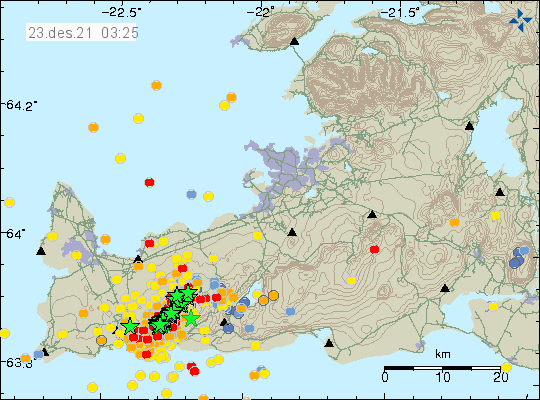

This earthquake activity is not going to stop until an eruption starts. When that happens is not possible to know. If a new crater opens up that is going to result in ever growing and stronger earthquakes. If the crater that is already in place starts erupting again, that is going to result in some earthquake activity. What is known is that the magma is going to go the path of least resistance, whatever that path might be. At the writing of this article, over 6000 earthquakes have been recorded and around 50 to 100 of them have been larger than magnitude 3,0.

